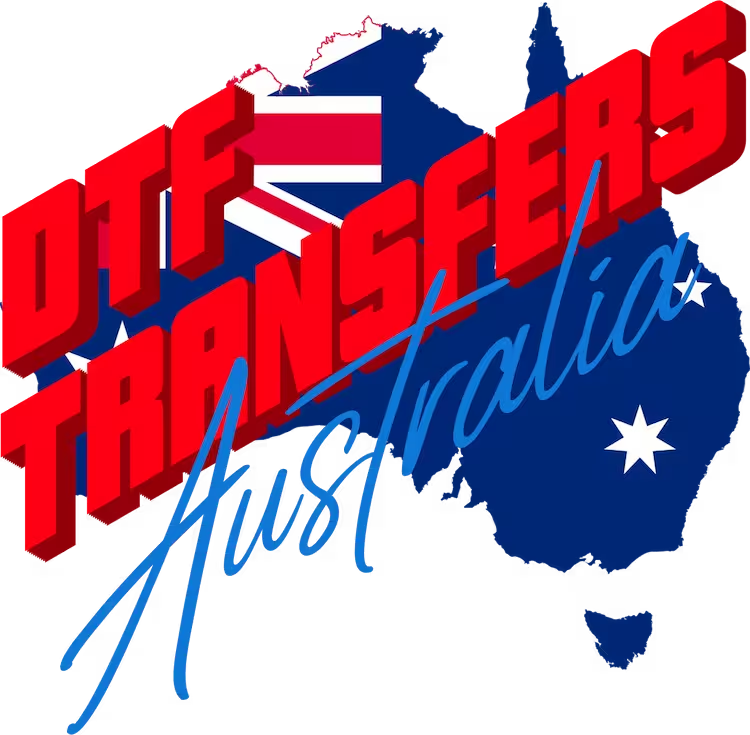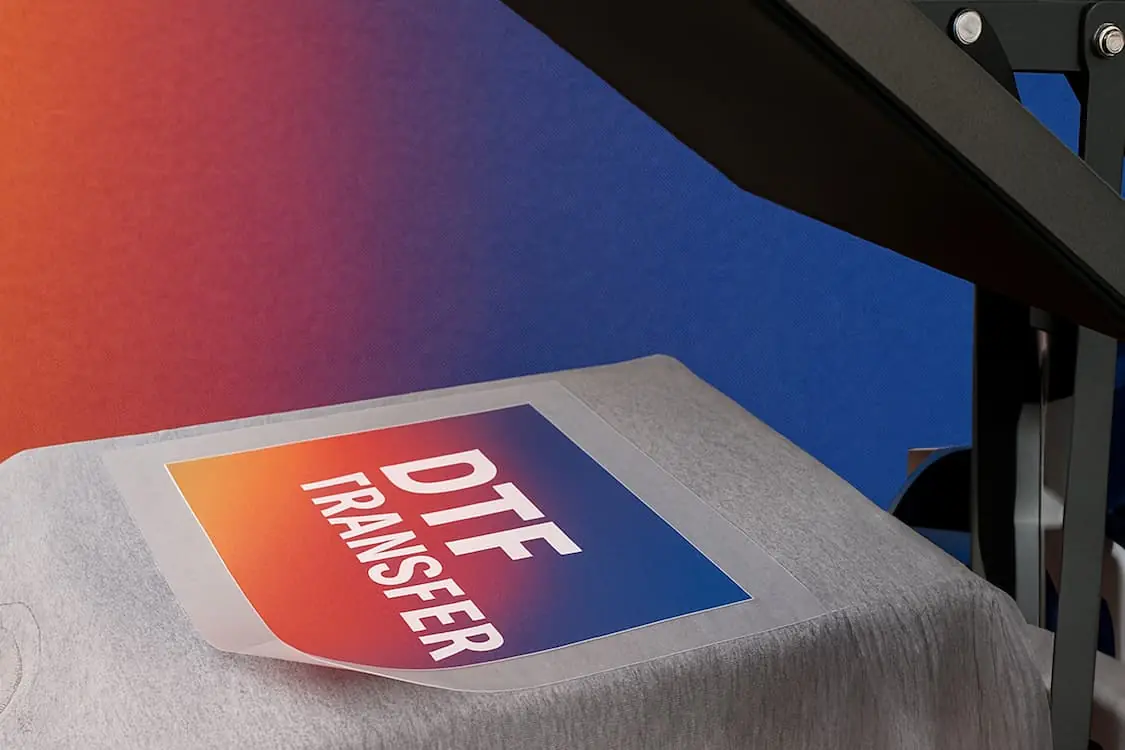All Posts, Helpful Info
DIY DTF Transfers: How Direct-to-Film Is Re-shaping T-Shirt Printing in Australia
The Direct-to-Film (DTF) Boom: Why Ready-to-Press Transfers Are Re-shaping Aussie T-Shirt Printing
If you decorated a single tee in 2005 you probably rang a screen printer, crossed your fingers they’d accept a “tiny” job, then waited while they burned two or three screens just to land your basic colour logo. Today you can order the same artwork on a DTF gang-sheet in full colour, pull a fresh shirt from the shops and fuse a photo-quality print in 15 seconds—no screens, no mess, no minimums. The shift is so dramatic that industry writers call 2025 “the rise of the home T-shirt business”.
From Screens to Film: Short-Run Printing Finally Makes Sense
Screen printing is still the king for thousands of identical one- or two-colour garments, but its economics collapse once every order is different or the volume is low. Each extra colour means another screen, another setup and more downtime. DTF, by contrast, arrives ready to press: the entire CMYK + white image has already been printed on PET film and coated with adhesive. One sheet, one press cycle, job done. Decorators who once turned away micro-orders now accept single shirts at a profit.
DTG in the Crosshairs
Direct-to-garment (DTG) shook things up over a decade ago, but it has weak spots that DTF exploits brilliantly:
-
Fabric limits – DTG loves cotton; DTF bonds to cotton, poly, nylon, fleece and blends.
-
Pretreatment – DTG on dark garments needs pretreat spray; DTF needs none.
-
Equipment cost – A commercial DTG rig can set you back AU $60 k+, while DTF sheets can be outsourced for a few dollars each.
Print-on-demand giants that specialised in DTG (Direct to Garment) have quietly added DTF alongside their DTG lines for exactly these reasons.
The DIY Factor: Transfers in Your Letterbox
Because DTF film ships flat or in a roll, there’s no printer maintenance to worry about—just a heat source. That’s why YouTube is packed with crafters using a Cricut EasyPress or similar hobby press to whip out one-off presents, club shirts and dance-mum hoodies. Transfer specialists even publish exact EasyPress settings: 160 °C for 15–20 sec, firm pressure, Hot-Peel, then a 7-sec post-press.
Check our video on using the Easy Press Here.
It works a treat for gifts and personal projects… but the moment you sell a shirt, “near enough” isn’t good enough.
Heat Press vs Easy Press vs Iron: Getting Real About Pressure
| Tool | Good For | Why It Falls Short |
|---|---|---|
| Household iron | Emergency fixes | Tiny platen, inconsistent heat, no real pressure. Expect peeling after a few washes. |
| Cricut EasyPress (or other craft press) | Hobby runs | Better than an iron but still manual and limited to ~30 × 25 cm. Good stepping-stone gear. |
| Swing-away / clamshell heat press | Commercial sales | Even heat across a 40 × 50 cm platen, reliable, faster workflow, pro durability. |
Consistent time + temperature + pressure is what makes a DTF print survive 50+ washes. A proper press delivers all three; an iron barely delivers on one.
What Does It Actually Cost to Start?
| Item | Typical AU cost |
|---|---|
| 38 × 38 cm heat press | $750 – $1 200 |
| Accessories for Printing | $55 |
| Blank tees (50 × AS Colour Staple) | $17.00 each |
| 1 m gang-sheet of DTF (28-58 cm wide) | $20 – $26 |
All Prices were correct at the time of writing and will change over time.
Where DTF Shines (and Where It Doesn’t)
Ideal for
-
Full-colour artwork under 40 × 50 cm
-
Mixed-fabric apparel: poly singlets, nylon rain jackets, hi-vis workwear
-
Boutique fashion runs of 10–100 units
-
Front, Back, Neck-labels and sleeve prints, you can gang it all onto one sheet.
Less ideal for
-
Single-colour, 5 000-unit promo runs (screen printing is still faster with the correct equipmant)
-
Ultra-oversized “all-over” prints—the hand-feel can get heavy, (full body sublimation is still the king for these type of prints.)
Five Quick Tips for First-Time Pressers
-
Gang your artwork—fitting multiple logos on one sheet slashes unit cost.
-
Stay at 300 DPI; anything thinner than 1 mm can be lost in the adhesive layer.
-
Pre-press the garment for 10-15 seconds to flatten fibres and remove any moisture.
-
Check the peel process “most of our transfers are hot peel”—incorect peeling can lift the print.
-
Post-press for 10-15 seconds with Teflon sheet or parchment paper for a matte the finish and lock everything in.
The Bottom Line
Direct-to-Film transfers have democratised custom apparel in Australia. With a modest outlay for a quality heat press you can produce photo-real prints on almost any fabric, in any colour, on demand—and do it profitably from a spare bedroom. Screen printing still rules stadium merch, but for vibrant, short-run, multi-fabric work DTF is quickly becoming the first choice.
Ready to give it a go? Grab a press, order a gang-sheet and discover how easy pro-level results can be. Your only regret might be how long you waited to jump in.


